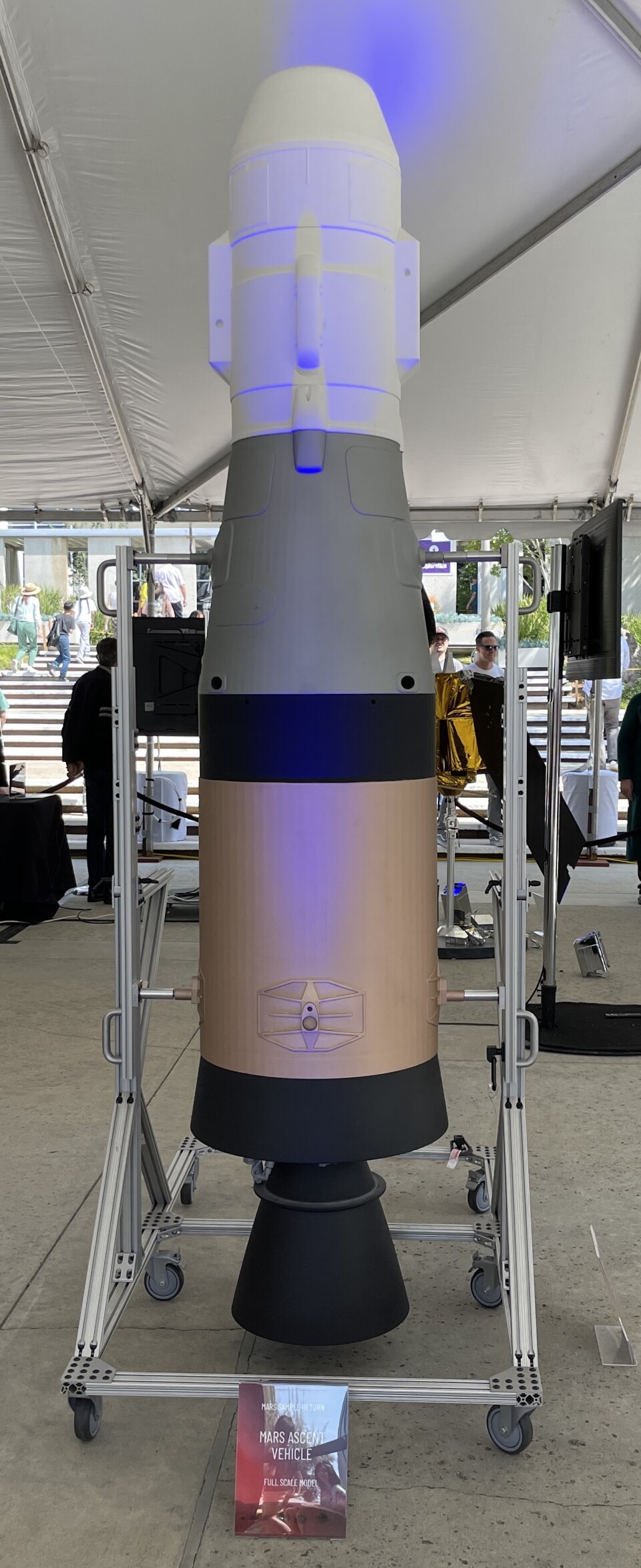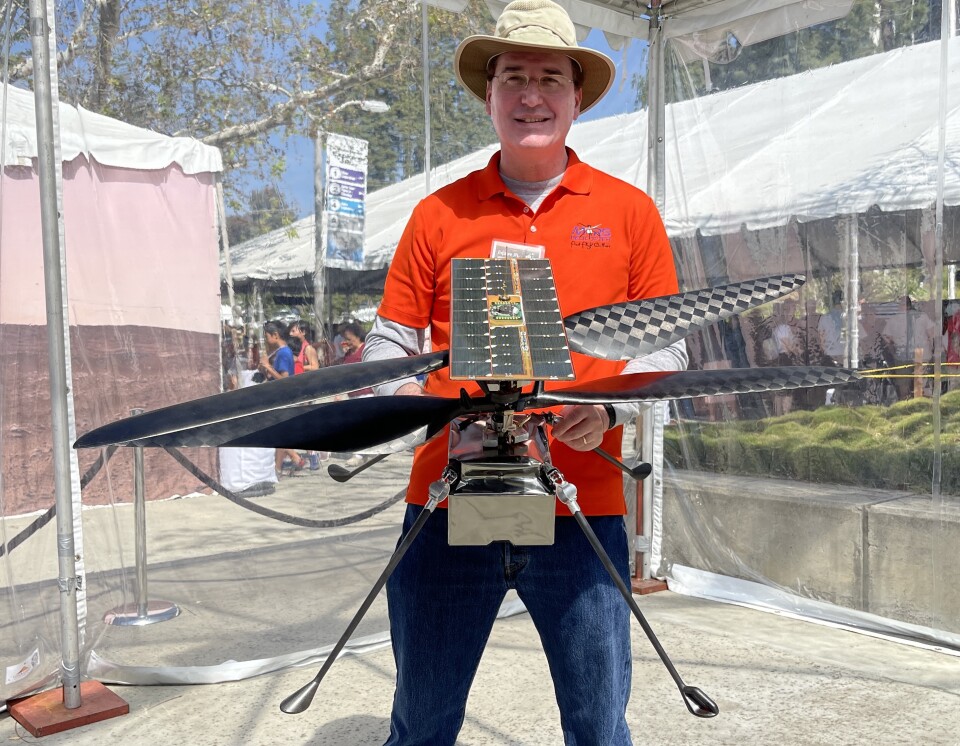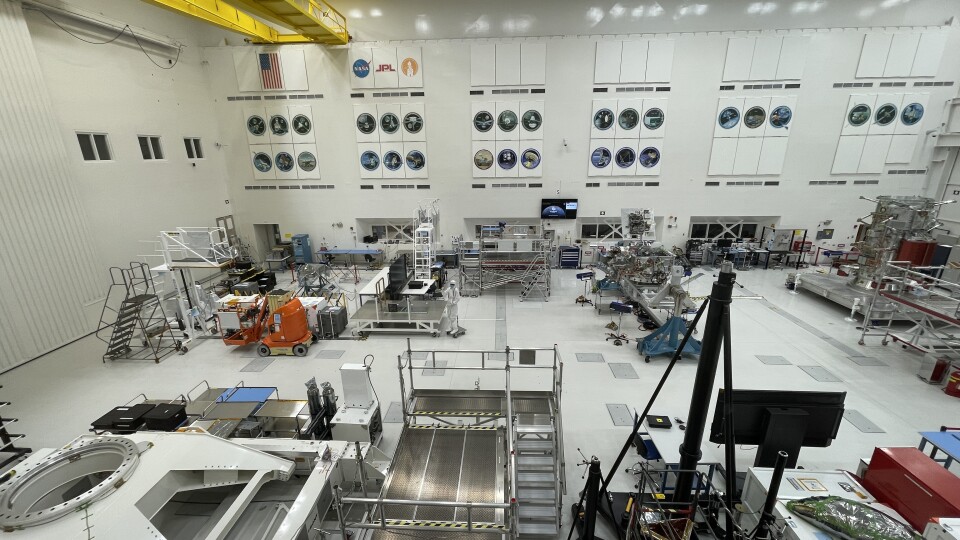Truth matters. Community matters. Your support makes both possible. LAist is one of the few places where news remains independent and free from political and corporate influence. Stand up for truth and for LAist. Make your year-end tax-deductible gift now.
36K Space Fanatics Got Tickets For JPL's First Open House in 4 Years. Here's What They Saw

Early Saturday morning, a line of space aficionados and nerds — myself included — gathered outside the entrance of NASA's Jet Propulsion Laboratory (JPL) in anticipation of their first Explore JPL event in four years.
Standing and waiting for their chance to look around the campus, the young and the old excitedly shared their bona fides with each other.
Some described the concussive booms they'd felt while scoping out launches at Vandenberg Air Force Base. Others bragged about meeting different lead engineers on projects like a Swiftie might talk about Taylor.
Many wore sciencey merch, including one guy with a t-shirt that had a giant face of Sheldon from The Big Bang Theory printed on it, along with the quote, "There's a fine line between wrong and visionary. Unfortunately, you have to be a visionary to see it."
Michael Yu, who was there with his teenager daughter and two of her friends, said it was all about getting to share his love of space and science with them.
"It's one of the reasons that I wanted to have kids," he said.

Why you need a ticket
JPL started requiring tickets in 2016 after about 45,000 people showed up for the 2015 open house — parking on residential streets and overwhelming the normally sleepy campus. The lines were so long, some people were turned back before making it to the gates.
This year, the 36,000 tickets available for the two-day event were reserved. Walk in and it's easy to see why.
People get to take a trip through Mission Control, check out full-scale replicas of machines we've sent to other planets and talk to the people who built them, all while eating churros, sucking down frozen lemonade and snapping up JPL merch.
It's a carnival for space obsessives. An example of how great science communication doesn't always need to be so stuffy.
Driving a Mars rover

This is the Scarecrow rover, which rover drivers use to practice their skills here on Earth. Its scaled down size helps create a similar experience for the drivers, given that the gravity is lower on Mars.

"When we drive we know we're seeing exactly what we're going to see on Mars," said robotics engineer Ashley Stroupe, the first woman to drive a rover on the red planet.
The front and rear wheels can all be steered independently. And not only can the rover easily climb over rocks, but it can head up hills as steep as a 35% grade.
"When there are big deep sand drifts that are very soft, we have to be very careful because the rovers are a little heavy and we can get bogged down. Ultimately, we lost the rover Spirit (in Mars in 2010) because we got bogged down in some sand that was very fluffy and we couldn't get her back out again. But we have learned a lot of tricks since then," Stroupe said.
Nearby is a model of the Perseverance, the most recent rover to land on Mars. Right next to the Mars ascent vehicle, which could one day help return samples being gathered by Perseverance back to Earth.
The plan to do so is pretty wild.
These are replicas of the drill bit and sample tubes being used to gather and store samples of Mars on Perseverance.

The helicopter checking out Mars
Compared to all of the other giant vehicles, this 1:1 replica of Ingenuity shows how small the first helicopter to fly on Mars actually is.

That said, it's been quite effective, having completed 51 flights so far, as it checks out possible areas of exploration for Perseverance and other missions. The motors in this model are a bit stronger than the one found on Mars to compensate for Earth's stronger gravity.
The Mars Reconnaissance Orbiter has been mapping the planet and gathering information about its climate since 2006.

Next stop: the Jovian moon Europa
The spacecraft for the Europa Clipper mission is currently being pieced together in JPL’s assembly facility, which is a giant clean room. To enter you have to dress up in special gear and get sprayed down by compressed air to make sure you're not bringing any contaminants.
This will be the first mission to gather extensive data on Jupiter's moon Europa, including whether it could be suitable for life.A repl

A replica asteroid
This is a small scale replica of Psyche, an asteroid which is about 140 miles in diameter and is flying through space somewhere between Mars and Jupiter. What they think happened is that, as a planet in our solar system was forming, another object smashed into it, breaking it apart, leaving bits of the planet's core flying through space.

"If it is indeed what we think it is, it'll basically be our best look ever at the core of a planet," said Luke Bury, who's working on the trajectory design team for the Psyche mission.
The plan is to launch a spacecraft in October 2023 that'll be able to help us study Psyche, which could in turn provide insights into how planets form, and the beginnings of our solar system. Sadly, you'll have to wait six years for the craft to get there.
Learn more about JPL's early days
You can explore the history of the Jet Propulsion Lab in LAist Studio's podcast Blood, Sweat & Rockets — from the "suicide squad" that tested early rockets through intrigue and espionage allegations as the program grew in size and prestige.
Corrected May 1, 2023 at 1:58 PM PDT
An earlier version of this story incorrectly spelled Luke Bury's last name as Buri. LAist regrets the error.











